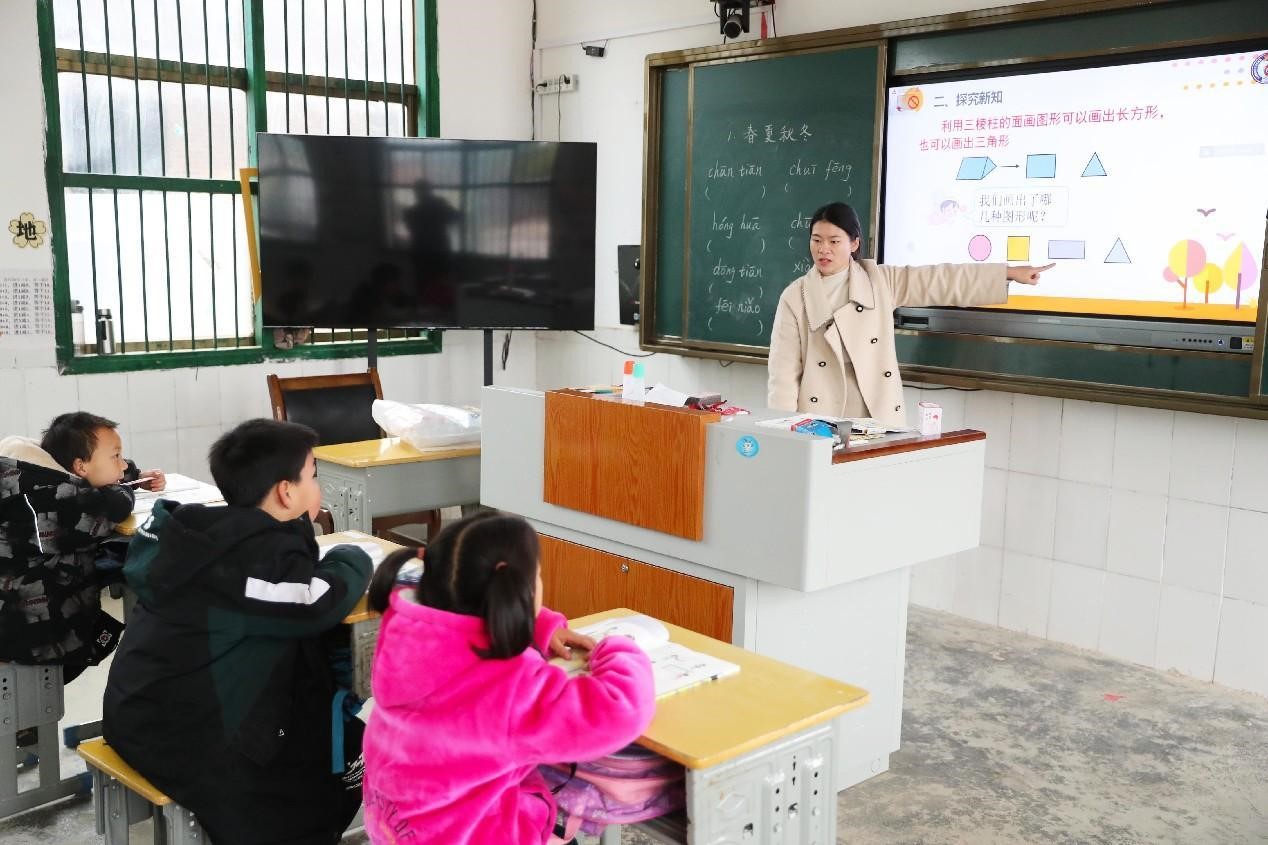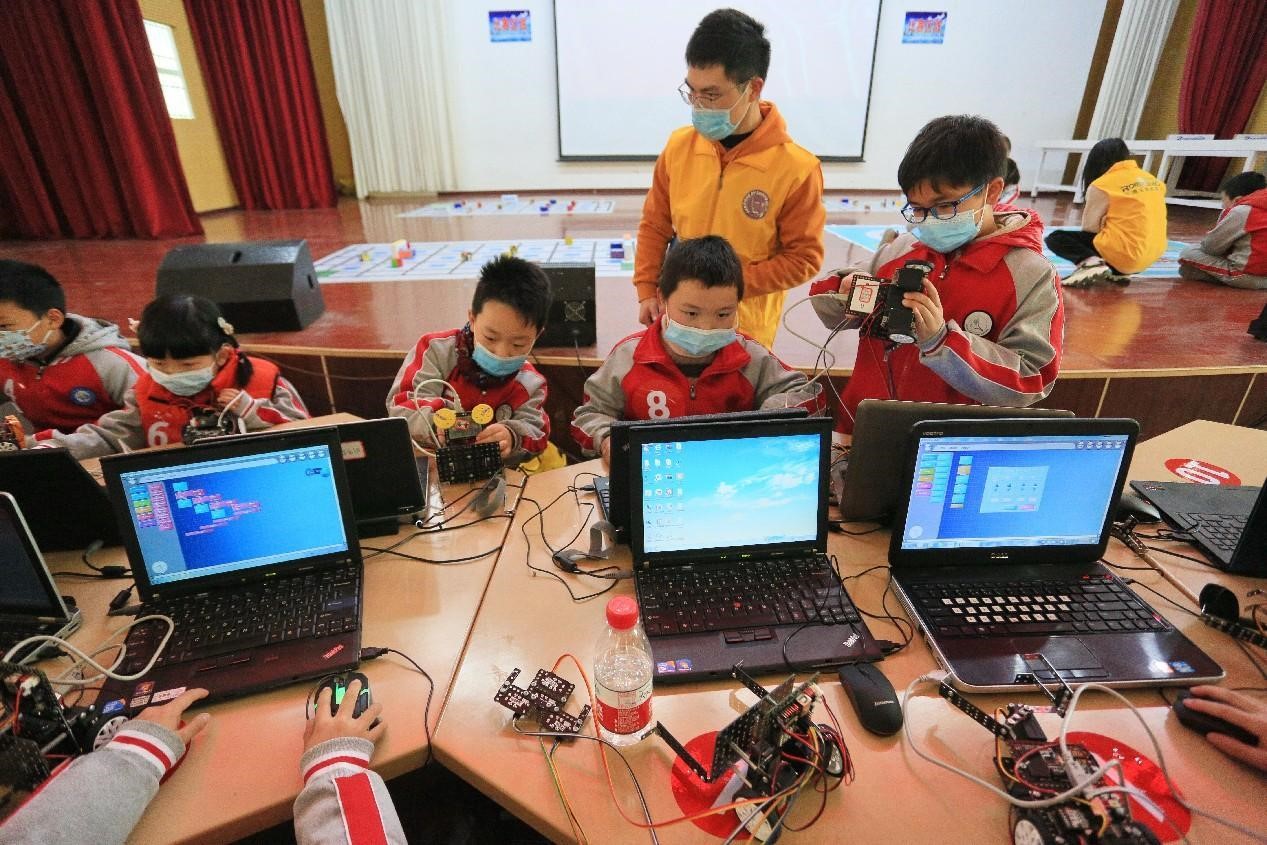Education gets more digital in China

Multimedia teaching facilities are employed on a class in an elementary school in Hujia village, Xintian county, Yongzhou, central China's Hunan province. (People's Daily Online/Liu Guixiong)
The World Digital Education Conference was held in Beijing recently, where a series of digital education equipment made a buzz.
For example, wearing a mixed reality headset, people could see a life-size aircraft engine in the virtual world, and even dismantle and assemble it with gaming controllers in their hands.
A 5G-enabled video camera could capture students' motions in real time when they make a standing long jump and then provide targeted guidance.
These devices are a miniature of the digitalization of China's education. Today, schools at all levels and of all types in the country are strengthening the application of digital technologies in educational activities. Digital Technology has changed the education scenario in the educational institutions by enhancing teaching and learning, research and governance.
The constant improvement of digital education facilities has laid an important foundation for the balanced improvement of education.
Today, all elementary schools, middle schools, and high schools across China have been connected to the internet, and 99.9 percent of them have 100 Mbps of bandwidth. Moreover, more than three quarters of Chinese schools have wireless networks, and about 99.5 percent of schools have multimedia classrooms.
The opening and sharing of digital education resources is key to narrowing digital and educational gaps.

Students have a science class wearing virtual reality headsets in a primary school in Qinhuangdao, north China's Hebei province. (People's Daily Online/Cao Jianxiong)
In March 2022, a public online service platform called Smart Education of China was launched, focusing on such areas as learning, teaching, school governance and educational innovation. So far, the platform has received more than 6.7 billion page views and more than 1 billion visitors from more than 200 countries and regions.
The platform provides access to quality education resources for rural primary and secondary schools in the underdeveloped central and western parts of the country. It also allows universities in the west of China to share quality resources provided by universities in the east.
A school in Nanchang, east China's Jiangxi province, has employed an online platform that checks students' homework and then generates an individualized mistake notebook for every one of them based on their performance. The mistake notebook includes the mistakes they have made previously, as well as other relevant exercises that help them better comprehend what they have learned.
Besides, teachers of the school can also check students' homework performance and their academic development on the platform.
"Based on the statistics, we can make targeted teaching plans at a faster speed, which significantly improves teaching efficiency," said a teacher named Liao Haiyan of the school.
Guo Jiezhong, head of Jiangxi province's educational department, told People's Daily that it is difficult to help every student improve academic performance under traditional models of doing homework, as students' performance varies and even students at similar levels could have different grasps of what they have learned.
"That's why we introduced the online platform," Guo added.

Students learn programming and assemble robots in a primary school in Jinxi county, Fuzhou, east China's Jiangxi province. (People's Daily Online/Deng Xingdong)
With digitalization, the education sector has evolved to provide flexible and deeper learning experiences to the students.
In a virtual simulation base for vocational education at Jiangxi Tourism and Commerce Vocational College, which is the first of its type in China, virtual reality (VR) equipment and controlling pads are used to help students learn the techniques.
"We used to show these techniques to students with pictures and videos. Now with VR devices, it makes the scenarios more real and better attracts students," said Duan Xinxin, a teacher of the college.
It is learned that the base has virtual simulation training centers for 28 majors, as well as classrooms equipped with collaborative VR headsets. Every classroom in the base comes with a VR machine, VR goggles, and multimedia teaching facilities. The base is able to accommodate 10,000 students.
"Learning will be a voluntary, immersive, and individualized matter in the future," said professor Song Tian with the School of Cyberspace Science and Technology, Beijing Institute of Technology.
By getting into different learning scenarios with the assistance of technological innovation, students will find learning more interesting and efficient, the professor added.
Photos
Related Stories
- China's mountain schools introduce children to the future
- Conditions ripe for international students to return to China
- Educators and scholars hold forum to discuss directions and goals of education amid global changes
- Digital transformation driving progress in education
- Chinese vice premier urges efforts to launch more high-quality digital education services, products
Copyright © 2023 People's Daily Online. All Rights Reserved.









